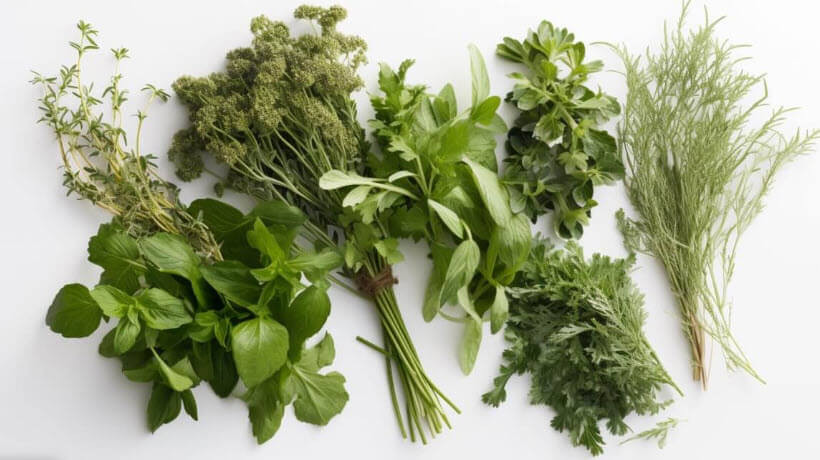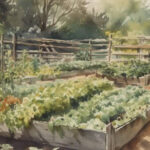Would you prefer to listen to a short podcast discussion about this article? Click on the audio below.
Do you want to enhance the flavours of your culinary creations or enjoy the therapeutic benefits of fresh herbs? Growing your own herbs is a rewarding and fulfilling endeavour that can elevate your gardening experience. In this comprehensive article, we will explore the various herbs that thrive in the UK climate and delve into the essential cultivation requirements to ensure a successful herb garden.
Introduction
Herbs play a vital role in enhancing the taste and aroma of our favourite dishes. Growing herbs in the UK allows you to have a readily available supply of fresh ingredients right in your backyard or even on a windowsill. Additionally, cultivating herbs provides a sense of fulfilment and satisfaction as you witness their growth and harvest their bountiful yields.
Importance of Growing Herbs
Growing herbs in the UK is particularly advantageous due to the region's favourable climate. The temperate climate, with mild summers and cool winters, creates an ideal environment for various herb species to thrive. Moreover, the UK's rich soil and ample rainfall contribute to the robust growth of herbs, ensuring a bountiful harvest.
Benefits of Growing Herbs
Apart from the convenience and accessibility, growing herbs in the UK offers numerous benefits. Firstly, herbs provide a sustainable and cost-effective way to enhance the flavours of your dishes without relying on store-bought options. Additionally, many herbs possess medicinal properties, providing natural remedies for various ailments. Furthermore, cultivating herbs contributes to biodiversity and supports pollinators, such as bees and butterflies, creating an eco-friendly garden.
The Best Herbs to Grow in the UK
Before you start planting, knowing which herbs grow best in the UK climate is important. Here are some of the top herbs to consider growing:
Basil
Basil is a popular herb that's easy to grow in the UK. It prefers warm weather and plenty of sunlight, so make sure to plant it in a sunny spot in your garden. Basil can be grown from seed or purchased as a plant from your local garden centre.
Chives
Chives are a hardy herb that can be grown in almost any climate. They prefer partial shade and well-draining soil. Chives grow well from seed or are purchased as a plant.
Mint
Mint is a versatile herb that can be used in cooking, teas, and even cocktails. It's also a great herb to grow in the UK, as it thrives in cooler temperatures and partial shade. Mint can be grown from seed or purchased as a plant.
Rosemary
Rosemary is a fragrant herb that's often used in Mediterranean cooking. It prefers full sun and well-draining soil. Rosemary can be grown from seed or purchased as a plant.
Thyme
Thyme is a hardy herb that can be grown in most climates. It prefers full sun and well-draining soil. Thyme can be grown from seed or purchased as a plant.
Parsley
Parsley is a popular herb that's used in a variety of dishes. It prefers partial shade and moist soil. Parsley can be grown from seed or purchased as a plant.
Sage
Sage is a fragrant herb that's often used in stuffing and other meat dishes. It prefers full sun and well-draining soil. Sage can be grown from seed or purchased as a plant.
Oregano
Oregano is a herb that's often used in Italian and Greek cooking. It prefers full sun and well-draining soil. Oregano can be grown from seed or purchased as a plant.
Dill
Dill is a herb that's often used in pickling and seafood dishes. It prefers full sun and well-draining soil. Dill can be grown from seed or purchased as a plant.
Coriander (Cilantro)
Coriander is a herb that's often used in Mexican and Asian cooking. It prefers partial shade and moist soil. Coriander can be grown from seed or purchased as a plant.
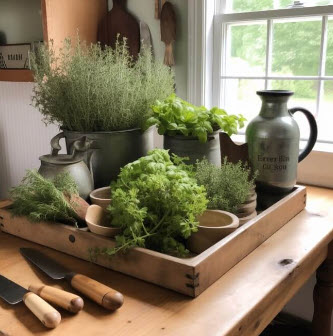
Companion Planting for Herbs
Companion planting involves planting certain plants together to help them grow better. Here are some companion planting tips:
Basil
Basil is a great companion plant for tomatoes, as it can help repel pests like whiteflies and aphids.
Chives
Chives are a good companion plant for carrots, as they can help repel carrot flies.
Mint
Mint is a good companion plant for cabbage, as it can help repel cabbage moths.
Rosemary
Rosemary is a good companion plant for beans, as it can help repel bean beetles.
Thyme
Thyme is a good companion plant for eggplant, as it can help repel flea beetles.
Parsley
Parsley is a good companion plant for asparagus, as it can help repel asparagus beetles.
Sage
Sage is a good companion plant for brassicas, as it can help repel cabbage moths.
Oregano
Oregano is a good companion plant for peppers, as it can help repel spider mites.
Dill
Dill is a good companion plant for cucumbers, as it can help repel cucumber beetles.
Coriander (Cilantro)
Coriander is a good companion plant for spinach, as it can help repel spider mites.
Cultivation Requirements
Now that you know which herbs to grow and how to companion plant them, it's important to understand their cultivation requirements. Here are some tips for growing herbs in the UK:
Soil
Most herbs prefer well-draining soil that's rich in nutrients. If your soil is heavy, consider adding compost or sand to improve drainage.
Watering
Herbs typically prefer moist soil, but be careful not to overwater them. Water your herbs when the top inch of the soil feels dry to the touch.
Sunlight
Most plants prefer full sun, but some, like chives and mint, can tolerate partial shade. Make sure to plant your plants in a spot that gets plenty of sunlight throughout the day.
Fertilizer
Herbs don't typically require a lot of fertilizer, but you can add compost or a balanced fertilizer to the soil if you want to encourage growth.
Pests and Diseases
Herbs can be susceptible to pests and diseases, so it's important to keep an eye out for any signs of trouble. Common pests include aphids, spider mites, and whiteflies, while common diseases include powdery mildew and root rot.
Harvesting
When it comes time to harvesting, it's important to do so at the right time. Most of these plants are best harvested in the morning after the dew has dried. You should also harvest the leaves before the plant starts to flower, as this is when the leaves are the most flavorful. To harvest, simply snip off the leaves with a pair of scissors or pruning shears.
Check out this excellent herb guide from Cooksmarts:
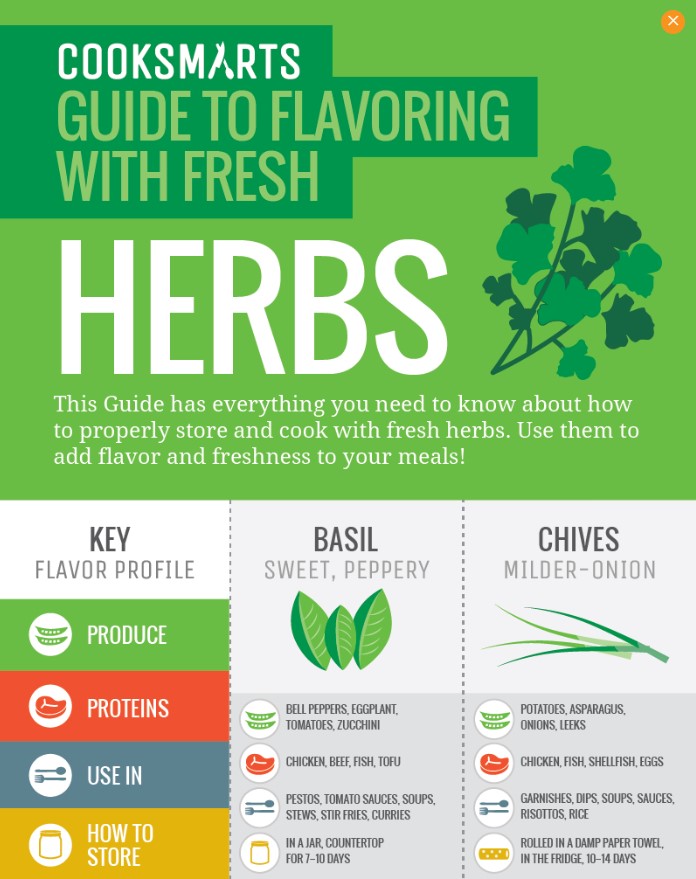
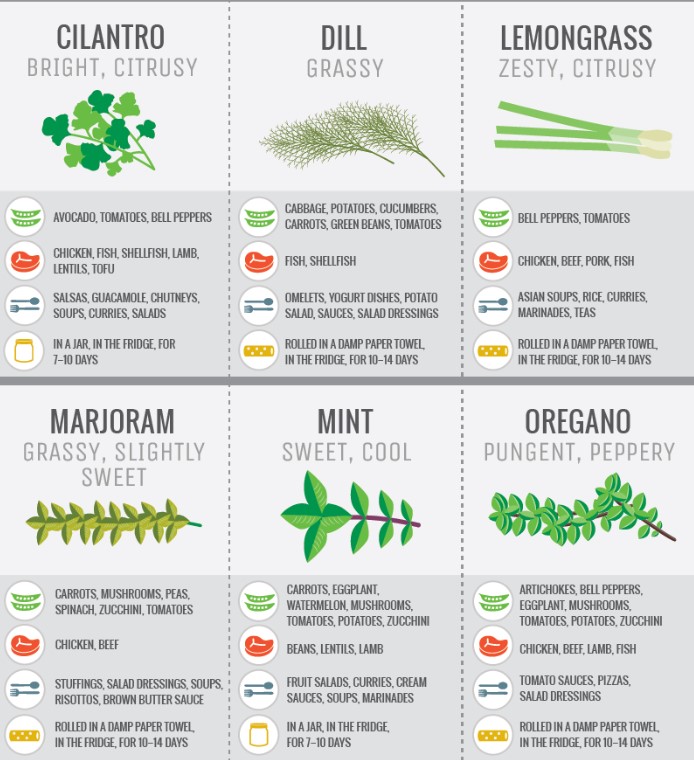


FREE eBook (no strings)
If you need any further information or assistance with this article, don't hesitate to Contact Us
